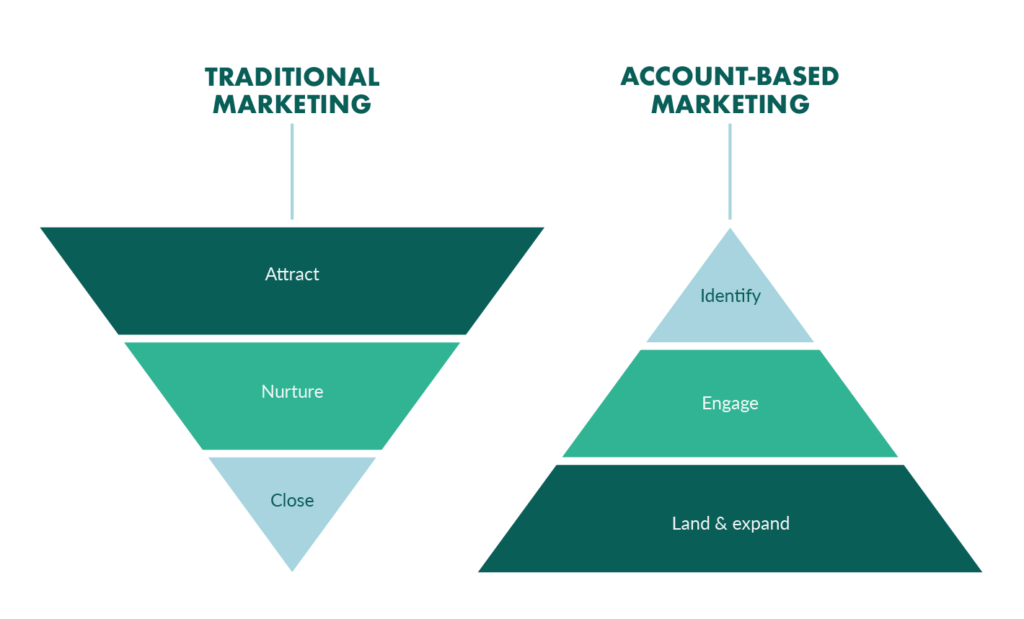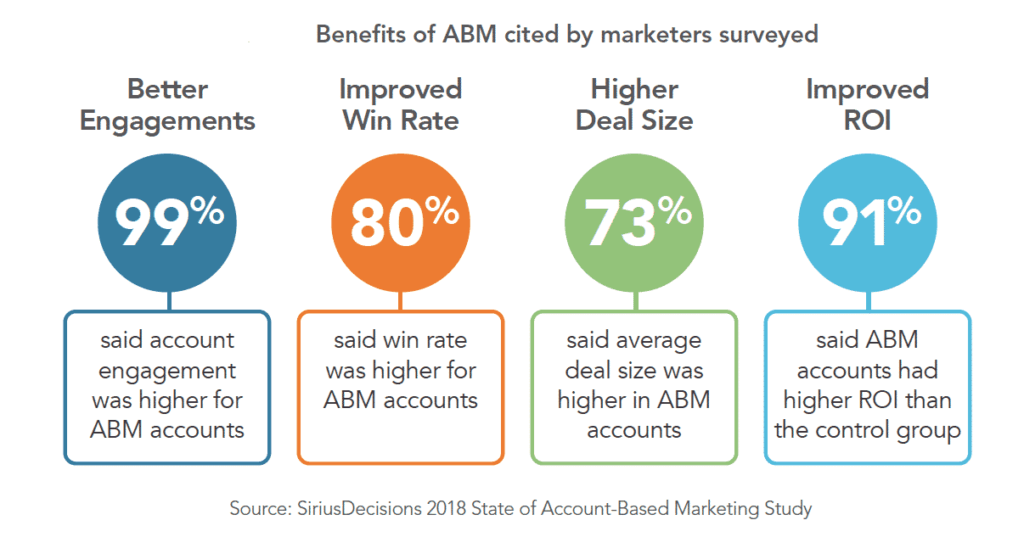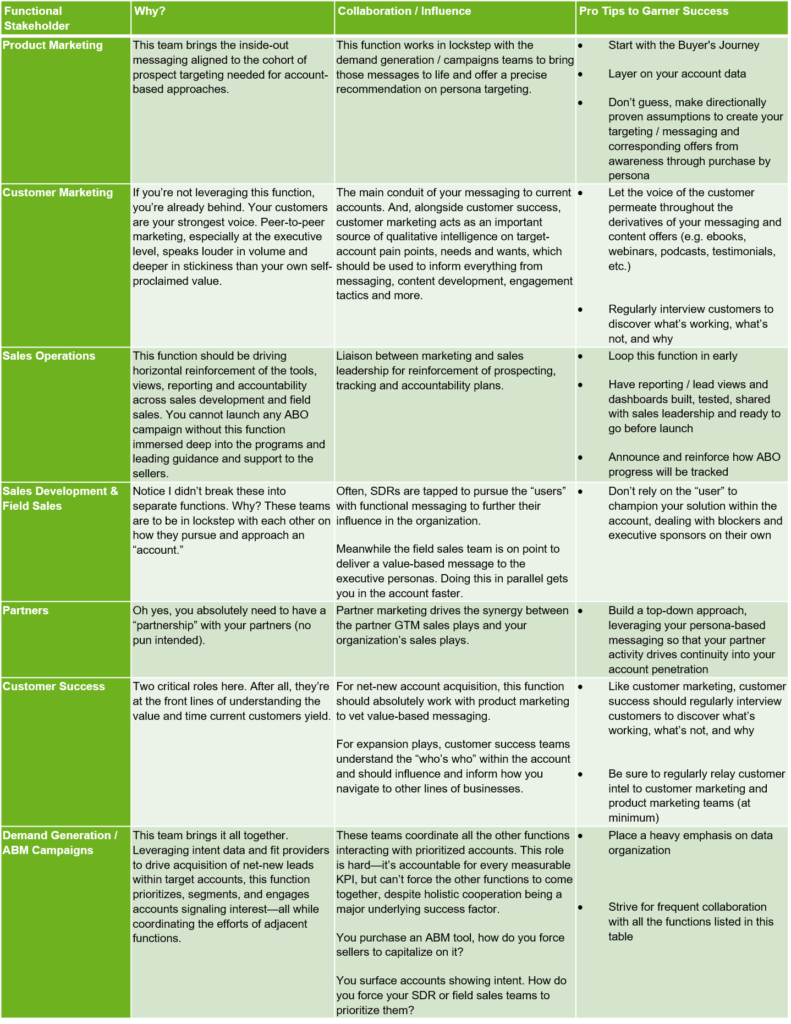What is ABM Orchestration, and Why Should You Care?

Many successful B2B companies are embracing the idea of working smarter, not harder. It’s become clear that there must be a better solution than casting a wide net with your marketing efforts to herd leads into your funnel and hoping that one or two will emerge as customers at the other end. Now, sellers are adopting Account-Based Marketing (ABM) as their strategy of choice. Seven out of ten marketers use ABM, and 87% say that it outperforms their other marketing initiatives.
ABM works by narrowly focusing on the specific organizations you hope to turn into customers and the individuals within that organization who hold decision-making power over major purchases. It can be highly effective, but it requires a more focused and disciplined approach to traditional marketing efforts. With ABM, everything comes down to making sure you’re delivering the right message to the right person at the right time.
Just as an orchestra conductor has to make sure the bass keeps the right tempo and the French horns come in on time, successful ABM campaigns depend on coordinating all your sales and marketing activities to bolster each other. You don’t want to be laying your closing pitch on the purchasing manager while the IT heads are still doing their research. ABM orchestration is the way to ensure that all of the various elements of your sales and marketing activities are working together in perfect, deal-closing harmony.
Let’s take a deeper look at ABM orchestration, its benefits, the ABM framework, and the powerful tools you can use to make orchestration more effective.
What is Account-Based Marketing Orchestration?
ABM is marketing that targets a very specific audience segment: one single, specific lead with high conversion potential. B2B companies often sell highly specialized solutions for particular needs. In many cases, there might only be a handful of companies in the world that require their products. Instead of widely broadcasting ads and marketing materials while hoping the right people see it, ABM has marketers pursuing their best prospects with personalized, carefully-researched messaging.

ABM runs into problems when marketers haven’t correctly identified what their target audiences need or when the content they serve up isn’t appropriate for where the target organization is at in their buyer journey. In the context of ABM, orchestration means that you’re running a coordinated, data-driven campaign where the message, the target, and the timing are all optimized for the best chance of success.
What are the benefits of ABM orchestration?
One of the most significant advantages of ABM is that it requires you to know your customer well enough to create the most relevant messaging possible for them, which will result in higher levels of engagement with your content. The increased attention makes your target more likely to convert, giving you more ROI for your marketing dollar.
When sales and marketing work together on ABM, they are 6% more likely to exceed their revenue goals. The benefits don’t end there. ABM helps you understand and communicate with your customers better, which leads to stronger relationships, long-term retention, and greater lifetime value.

Orchestration ensures that you don’t miss these opportunities due to bad timing or inaccurate targeting. Employing ABM orchestration shows an understanding of the needs and relevance of potential customers, which strengthens your brand and engagement. It creates competent, compelling marketing messages which are always valuable and address specific objectives for the targeted account.
4 Steps in ABM Orchestration Framework
The optimal ABM orchestration framework can be broken down into a basic four-step process:
1. Choose an account to target
Every ABM campaign needs one target to focus on. Market research and data insights can provide you with a list of potential customers; knowledgeable sales and marketing team members can help you narrow it down to the ones you should target first. If the choice isn’t obvious, look for signals that communicate a need for your product and an interest in engaging with the kind of content you have to offer.
2. Plan your approach
Good planning starts with defining your goals for the campaign and how you intend to reach them. Your approach depends significantly on how well you know the prospect and whether or not you can determine what stage of the buyer journey they’re at. You’ll want to identify the key decision-making people and discover the internal and external forces driving their purchasing needs.
With this information, you can start making connections between the buyer’s requirements, the individuals you must convince that you have the solution, and the messaging that will win them over.
3. Set things in motion
Once you’ve organized your plan, you can define success metrics and start curating the content to create your prospective customer’s best and most persuasive experience. It’s crucial at this stage to track engagement and map out the target’s progress through their buyer journey. This information will allow you to make adjustments as needed and provide proper attribution for the positive outcomes of your campaign.
4. Ongoing Communication
Within this framework, it’s important to note that every role in the sales and marketing team will have specific ways to collaborate and influence each other to achieve a successful orchestration campaign.

Frequent, ongoing communication and cross-checking among team members is critical for success.
ABM Orchestration Platforms
Whatever your marketing objectives are, and no matter what strategy you’ve developed to deliver them, you can always get better results if you have the right tools. Many software tools are designed to help marketers build better ABM campaigns, but you need to choose them carefully to make sure they’re directly supporting your efforts.
ABM orchestration platforms provide a centralized location for all ABM campaigns and their management, including incorporating data and insights from ABM tools. One essential function of ABM orchestration platforms is to help you follow prospects on their buyer journey. They allow you to adapt your messaging and delivery to meet them where they’re at with content they’ll find relevant and engaging.
ABM orchestration platforms can also provide your teams with a common point of access, minimizing the chance that valuable insights will get siloed and overlooked. Personalization has become a critical factor in creating positive, conversion-driving experiences. Platforms that analyze behavioral data in real-time and suggest context-dependent adaptations can make your audience feel like you’re speaking directly to them—because really, you are.
ABM Orchestration—the Ultimate ABM Tactic
ABM can incorporate all of your best marketing tactics, but the one tactic that can make your ABM campaign flourish is orchestration. As a unifying approach that gathers and focuses all of your teams, tools, and organizational resources into a cohesive strategy, orchestration is the best way to realize the full potential of your ABM activities.
At a fundamental level, orchestration means that you aren’t doing ABM in a disorganized, unfocused way. Orchestration puts your sales and marketing teams in alignment, which is critical for any ABM campaign that hopes to succeed. It also gets your messaging and content coordinated across all the channels your audience cares about. Well-orchestrated ABM is also much easier to scale, adapt, and automate.
ABM has the power to drive sales and solidify customer relationships, yielding significant rewards for organizations that do it right. Orchestration is the framework that minimizes wasted resources, lost opportunities, and irrelevant communications, resulting in ABM campaigns that live up to their full potential.
Put Some Orchestral Maneuvers in Your Marketing Stack
The rise of ABM has been a game-changer for B2B sales and marketing, but that doesn’t mean you should just aim all your content at a few individual decision-makers and hope for the best. ABM orchestration is the strategic approach that makes an ABM campaign greater than the sum of its parts, setting you up to succeed at closing deals and increasing your revenue.
Even with talented musicians and a genius conductor, an orchestra will sound pretty bad if the sheet music is out of order. In the same sense, brilliant content and razor-sharp sales pitches aren’t going to get anywhere if you’re giving them to the wrong people at the wrong time. ABM tools like Trendemon can pinpoint how far your targets have come in their buyer journey, showing you exactly where your windows of opportunity are, and how to make meaningful, compelling points of contact with your future customers. Whether marketing or music, the right tools, like the right instruments, are the backbone of any great orchestra.